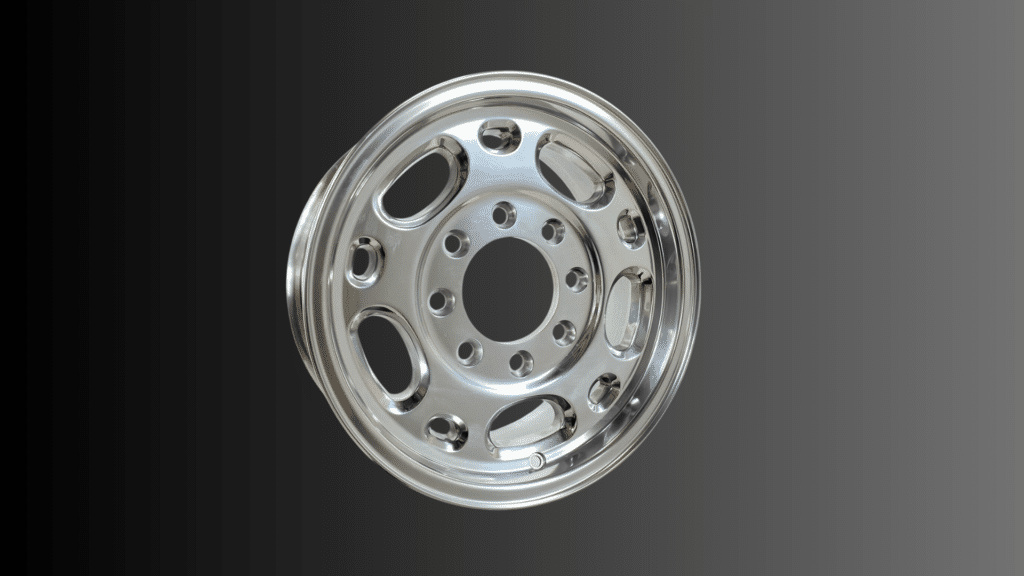Struggling to find the right wheels for your Tundra? You’re not alone. As a Toyota mechanic with 15 years of experience, I’ve seen countless drivers confused about bolt patterns.
In this guide, I’ll walk you through everything you need to know about your Tundra’s bolt pattern. Whether you’re looking to upgrade your wheels or need a replacement, you’ll learn exactly what fits your truck.
I remember being stumped by bolt patterns when I started working on trucks. That’s why I wrote this guide in plain English – no complicated jargon or confusing terms. Just clear, practical information you can use today.
Here’s what we’ll cover
- How to measure your Tundra’s bolt pattern
- Which years share the same pattern
- Common wheel fitment mistakes to avoid
Let’s get your wheel situation sorted out.
Chevy 2500 Lug Pattern Overview

I’ll get straight to the point: The Chevy 2500 uses an 8-lug bolt pattern with a 180mm bolt circle. This hasn’t changed since 1999.
Most people don’t know that your 2500’s lug pattern is bigger than what you’ll find on most trucks. That’s because it needs to handle heavier loads.
Want to double-check your pattern?
Measure from the center of one lug to the center of the lug directly across from it. You should get about 180mm (or roughly 7.1 inches).
Breaking it down simply
- 8 lugs in total
- 180mm bolt circle diameter
- 14mm x 1.5 thread size
- Right-hand thread direction
A quick tip: Take a photo of your wheel’s backside with your phone. This makes shopping for replacements much easier – you can show it to parts dealers or compare it with online listings.
Many folks bought the wrong wheels because they assumed all heavy-duty trucks use the same pattern. Trust me, measuring first saves headaches later.
How to Measure a Lug Pattern
Never guess your lug pattern. I’ll show you how to measure it correctly, even if you’ve never done this.
1. For 4-Lug Wheels
Measure straight across from one lug to another. That’s your bolt circle diameter. Pretty simple, right?
2. 5-lug patterns
You can’t measure straight across, so here’s what to do:
- Measure from the center of one lug to the outside edge of the furthest lug
- Multiply that number by 1.701
- Round to the nearest common size
Here’s a pro tip: Use a proper lug pattern gauge if you can. They’re cheap and way more accurate than eyeballing it.
3. 6-lug and 8-lug wheels
Measure from the center of one lug directly across to the center of the opposite lug. That’s your bolt circle diameter.
Quick check: Write down your measurement. Most passenger vehicles use common sizes like 4x100mm or 5×114.3mm. If you get something weird like 4×97.3mm, measure again – you might be off.
Remember: Getting this wrong means buying wheels that won’t fit. Take your time and measure twice.
Compatibility and Wheel Fitment
Getting wheel fitment right matters. Beyond just the lug pattern, several measurements determine if a wheel will fit your vehicle properly.
Let’s break down what you need to know:
1. Offset
It is how your wheel sits on the hub. Think of it like this:
If the wheel sits toward the outside of your car, that’s a negative offset. Toward the inside? That’s positive. Getting this wrong can make your wheels rub or stick out too far.
2. Centerbore
It is the hole in the middle of your wheel. It needs to fit perfectly over your hub. Too small won’t work. Too big means you’ll need hub-centric rings.
3. Width and diameter
It seems obvious, but here’s what people miss:
- Wider wheels might rub your fenders
- Taller wheels can mess with your speedometer
- Smaller wheels might not clear your brake calipers
Here’s something most people overlook: Your vehicle’s weight rating. Putting lightweight wheels on a heavy truck is asking for trouble.
Before you buy, write down these measurements. They’re your blueprint for perfect fitment.
Upgrading or Changing Wheels
Planning to upgrade your wheels? Let me help you avoid some expensive mistakes I’ve seen others make.
First, consider your driving needs:
- Do you go off-road?
- How much do you tow?
- What’s your daily commute like?
1. Bigger isn’t always better
While those massive 22-inch wheels might look great, they can hurt your truck’s performance. I’ve seen folks regret huge wheels after their first winter or heavy load.
Most salespeople won’t tell you that changing wheel size affects everything from your gas mileage to your braking distance.
2. Weight matters
Those heavy chrome wheels might look sharp, but they’ll make your truck work harder. Think about it: That’s more weight, and your brakes need to stop, and your engine needs to move.
My practical advice?
Stay within 2 inches of your factory wheel size. You’ll get the look you want without sacrificing performance.
One last tip: Keep your stock wheels. If your upgrade doesn’t work out like you hoped, you’ll have a backup plan ready to go.
Differences Between Chevy 2500 and 3500 Lug Patterns
| Feature | Chevy 2500 | Chevy 3500 |
|---|---|---|
| Number of Lugs | 8 | 8 |
| Bolt Circle Diameter | 180mm (7.1″) | 180mm (7.1″) |
| Thread Size | 14mm x 1.5 | 14mm x 1.5 |
| Thread Direction | Right-hand | Right-hand |
| Typical Wheel Size | 17″ – 20″ | 17″ – 20″ |
| Common Backspacing | 4.5″ – 5.5″ | 4.5″ – 5.5″ |
| Typical Offset Range | +10mm to -12mm | +10mm to -12mm |
| Center Bore | 124.9mm | 124.9mm |
| Load Rating | Up to 9,500 lbs | Up to 11,500 lbs |
| Years Using Pattern | 1999 – Present | 1999 – Present |
Note: While both trucks share the same lug pattern, the 3500’s wheels typically have a higher load rating to handle the increased weight capacity.
How Lug Patterns Affect Performance
Think lug patterns are just about making wheels fit? They actually affect how your vehicle handles, stops and performs. Let me explain why this matters.
Balance is everything. The wrong lug pattern can create uneven stress points on your wheels. I’ve seen wheels crack because they weren’t matched correctly to the vehicle’s weight and driving demands.
1. Your brakes care about lug patterns, too.
Here’s why:
- Even weight distribution means better brake performance
- Proper fitment prevents wobble at high speeds
- Correct patterns ensure full contact with brake rotors
Let me share something most people miss: Lug patterns affect your suspension geometry. When wheels aren’t mounted exactly right, your suspension has to work harder. This means faster wear on shocks, ball joints, and tie rods.
2. Think about torque transfer
With the right lug pattern, power moves smoothly from your drivetrain to your wheels. Get it wrong, and you’re asking for trouble – especially during hard acceleration or heavy towing.
Remember this: A proper lug pattern isn’t just about making wheels fit. It’s about making your vehicle perform the way it was designed to.
DIY Guide: Installing New Wheels on a Chevy 2500
Safety first: Park on level ground, engage your parking brake, and use proper jack stands – not just your jack. I’ve seen too many close calls with improper support.
Here’s your step-by-step process:
1. Initial Setup
- Loosen lug nuts while the wheel is still on the ground
- Position the jack under the proper lifting point
- Raise the vehicle and secure it with jack stands
2. Removal Process
- Take off lug nuts in a star pattern
- Remove the old wheel carefully
- Clean the hub surface thoroughly
3. New Wheel Installation
- Check the center bore alignment
- Mount the wheel onto the hub
- Hand-start all lug nuts
4. Final Steps
- Lower the vehicle until the wheels touch the ground
- Torque lug nuts to 140 ft-lbs in a star pattern
- Double-check all lug nuts
Pro tip: Break this job into chunks. Don’t rush. I always mark my first lug nut with chalk to keep track of my torque pattern.
Warning: Recheck your lug nut torque after 50-100 miles. They can loosen up during the initial break-in.
Final check: Take a short test drive. Listen for any unusual noises. If something doesn’t feel right, stop and recheck everything.
Best Aftermarket Wheels for Chevy 2500
Let’s skip the marketing hype. I’ll share which wheels perform well on 2500 based on real experience and durability testing.
First, my top picks:
1. Method Race Wheels Con6
- Proven strength for heavy loads
- True 8-lug HD construction
- Clean, simple design
- About $250-300 per wheel
2. Fuel Off-Road Maverick D538
- Great for daily drivers
- Solid load rating
- Modern style without being flashy
- Typically $280-340 each
3. Pro Comp Series 69
- Best value for money
- Simple to clean
- Handles off-road abuse
- Usually under $200 per wheel
Here’s what most wheel sellers won’t tell you: Fancy finishes look great in the showroom but often don’t hold up under real-world conditions. I’ve seen $400 chrome wheels look terrible after one winter.
My practical advice: Choose a wheel with a simple finish in satin black or gunmetal. They hide brake dust better and still look good after years of use.
Remember: The best wheel isn’t always the most expensive. Focus on load rating and construction quality first and look second.
Choosing the Right Wheels Final Thoughts
Getting your wheel setup right matters more than most people realize. After working on thousands of trucks, I’ve learned that the right wheels aren’t just about looks – they’re about safety, performance, and reliability.
Whether you’re running a stock Chevy 2500 or upgrading to aftermarket wheels, understanding your lug pattern and fitment requirements is crucial.
Take your time with this decision. I’ve seen too many folks rush into wheel purchases only to regret them later.
Remember: proper fitment affects everything from your braking to your fuel economy. Measure twice, research thoroughly, and don’t be afraid to ask questions.
Your truck is a significant investment, and the right wheels will help it perform at its best for years to come.
Still unsure? Start with your vehicle’s specifications and work from there. It’s better to spend an extra hour researching than to spend hundreds of dollars fixing a poor wheel choice.
And remember, factory specs exist for a reason – any major deviation should be carefully considered.
Frequently Asked Questions About Truck Wheel Fitment
Can I use 3500 wheels on my 2500?
While they share the same bolt pattern, always check the load rating. 3500 wheels handle heavier loads, so they’ll work on a 2500. However, 2500 wheels might not be rated for a 3500’s weight.
Will changing my wheel size affect my speedometer?
Yes, significant changes in wheel diameter will make your speedometer read incorrectly. As a rule, every inch of total diameter change affects your reading by about 3%. Some modern trucks can be recalibrated to fix this.
Do I need hub-centric rings when upgrading wheels?
You’ll need hub-centric rings if your new wheels have a larger center bore than your hub. These ensure your wheels are perfectly centered, preventing vibration and uneven wear.
How often should I retrieve my lug nuts?
Check torque after the first 50-100 miles of installing new wheels. After that, check during tire rotations or every 6 months. Always torque to 140 ft-lbs for Chevy 2500s.
Can I put bigger tires on stock wheels?
You can go slightly larger, but there are limits. Generally, stay within 3% of your stock tire’s overall diameter unless you’re prepared to make suspension modifications. Check your owner’s manual for specifics.


